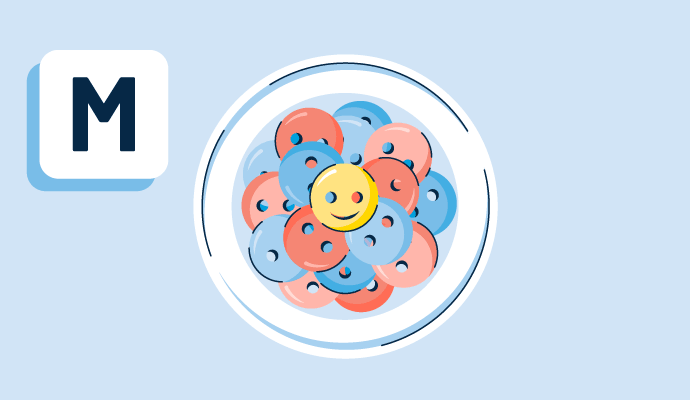What is market saturation?
Market saturation occurs when a product or service reaches its entire customer base in a given market and supply outruns demand. In other words, products or services are no longer in need due to less demand or similar offerings from competitors.
At the saturation point, a company can only gain new market share and achieve growth by taking existing market share from competitors or finding a way to increase consumer demand in their favor.
Competitive intelligence software teaches businesses to understand their competitive landscape, and how saturated the market is. These tools assist in capturing, analyzing, and taking action on this landscape while also anticipating competitor actions in the future.
How to determine market saturation
A good way to know if a market has become saturated is if major supplies who sell a certain product with a low-profit market start to make entering the market not enticing or worthwhile for new companies.
For example, if a business-owner wants to open a bakery in town but the town already has three bakeries, the market is saturated.
Types of market saturation
The two types of market saturation are macroeconomic and microeconomic.
At the macroeconomic level, market saturation happens when the entire customer base has received all the services or products needed, and there are no new customers to acquire. The introduction of new technology is an example of market saturation. For example, cell phones decreased the demand for pagers.
At the microeconomic level, market saturation occurs when a specific market no longer demands a product or service. This could occur due to intense competition, lack of consumer interest, or a business inadvertently reducing the need for its products or services without bringing on new customers.
For example, suppose there’s been one Italian restaurant in a neighborhood for nearly 20 years. A unique and modern Italian restaurant opens in the same community, minutes away from the original. Customers gravitate toward the new restaurant, and the original one loses customers due to competition and lack of interest.
Examples of market saturation
To understand market saturation more, let's explore some real-life examples.
- Houses: It's common for real estate markets to become saturated when home-buyers and renters don't have the urge to find new places to live in an existing market. This could cause home sellers and landlords to reduce prices, renovate existing spaces, or come up with new reasons for home buyers and renters to move into an available space.
- Streaming services: There are several providers of streaming services that have already hit maximum growth within the market, making it hard to stand out. Streaming businesses often offer distinctive features, like lower pricing or more content, as perks to entice customers away from other options.
- Smartphones: These days, more people already have a smartphone, or even more than one. Companies that sell smartphones now have to create a new demand by upgrading these products with cutting-edge technology and all-new features. Existing smartphone owners often purchase the new version of a device to have to have the "latest and greatest".
Causes of market saturation
Market saturation can have a significant financial impact on businesses. Below are some of the common reasons markets become saturated.
Increased competition
New businesses opening in an industry with little differentiation between existing firms can cause markets to become saturated quickly. Examples include many of our daily products and services, such as television streaming services, beauty brands, and apparel.
Changing customer bases
Trends cause fluctuations in the customer base. When trends fade out, customers may lose interest in a product or service and decrease its overall demand. To combat this, companies must consider offering products and services that have long-term potential beyond trends.
New technology
Ever-evolving technologies and innovative solutions can decrease the demand for older, outdated products. As society makes technological advances, previous versions of similar solutions often get left behind.
How to overcome market saturation
With the right strategy and approach, businesses can succeed and remain successful in saturated markets. Companies that consider the following may position themselves to be more likely to compete and win in a saturated market.
Effective pricing
A business owner may examine a saturated market and decide to adjust or cut internal costs. Doing so makes it possible for them to keep a greater amount of their earned revenue. Selling products or services at a lower price can help them gain market share.
New product development
Companies can stand out in an oversaturated market by offering new products or improving existing products in the industry. Innovation and more value can help raise customer demand and naturally take market share from competitors with similar offerings. For the best chance at success, businesses should ensure new products and enhancements are relevant to their customer base.
Diversification
While many companies offer similar products and services, each business is unique in its own way. Creating a specific niche helps enterprises refine their customer base and reach targeted customers. When selecting a niche, businesses should identify what makes them and their offerings original.
Creative marketing strategies
Customers may be inundated with information from businesses that offer similar products and services. Prioritizing creative marketing efforts and leaving customers with a memorable, easily identifiable brand elevates a company’s reputation and builds brand awareness.
Top-notch customer service
A company’s customer service quality can be a make-it-or-break factor for many customers. Customers who have repeated pleasant experiences and receive the help they need when contacting customer service may become loyal, long-term customers and provide word-of-mouth referrals for businesses.
Value-added services
Companies should focus on providing customers as much value as possible. There are many ways to increase value, including exclusive customer experiences, customer incentives, loyalty programs, and personalization efforts.
Alyssa Towns
Alyssa Towns works in communications and change management and is a freelance writer for G2. She mainly writes SaaS, productivity, and career-adjacent content. In her spare time, Alyssa is either enjoying a new restaurant with her husband, playing with her Bengal cats Yeti and Yowie, adventuring outdoors, or reading a book from her TBR list.










